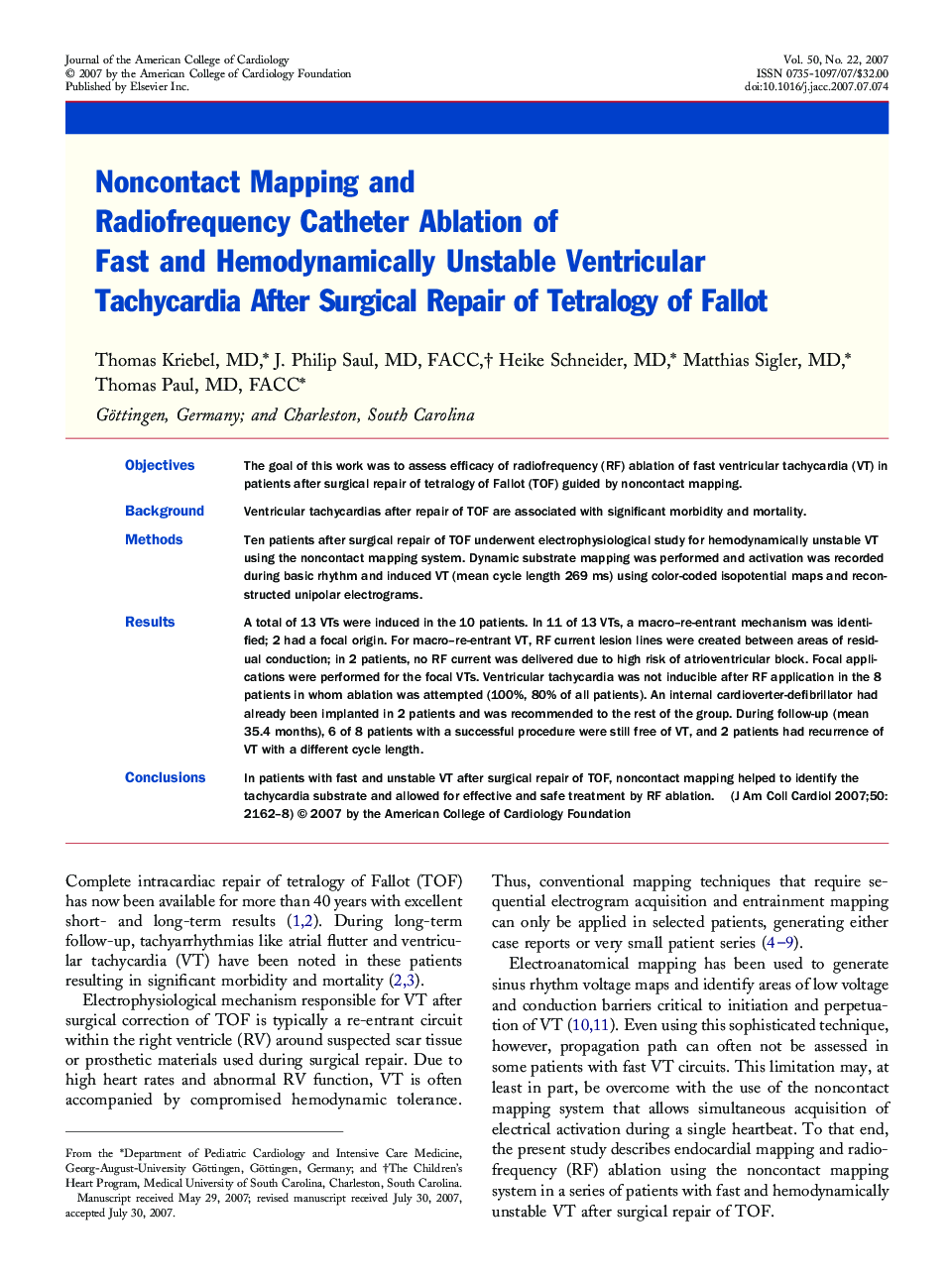| Article ID | Journal | Published Year | Pages | File Type |
|---|---|---|---|---|
| 2952842 | Journal of the American College of Cardiology | 2007 | 7 Pages |
ObjectivesThe goal of this work was to assess efficacy of radiofrequency (RF) ablation of fast ventricular tachycardia (VT) in patients after surgical repair of tetralogy of Fallot (TOF) guided by noncontact mapping.BackgroundVentricular tachycardias after repair of TOF are associated with significant morbidity and mortality.MethodsTen patients after surgical repair of TOF underwent electrophysiological study for hemodynamically unstable VT using the noncontact mapping system. Dynamic substrate mapping was performed and activation was recorded during basic rhythm and induced VT (mean cycle length 269 ms) using color-coded isopotential maps and reconstructed unipolar electrograms.ResultsA total of 13 VTs were induced in the 10 patients. In 11 of 13 VTs, a macro–re-entrant mechanism was identified; 2 had a focal origin. For macro–re-entrant VT, RF current lesion lines were created between areas of residual conduction; in 2 patients, no RF current was delivered due to high risk of atrioventricular block. Focal applications were performed for the focal VTs. Ventricular tachycardia was not inducible after RF application in the 8 patients in whom ablation was attempted (100%, 80% of all patients). An internal cardioverter-defibrillator had already been implanted in 2 patients and was recommended to the rest of the group. During follow-up (mean 35.4 months), 6 of 8 patients with a successful procedure were still free of VT, and 2 patients had recurrence of VT with a different cycle length.ConclusionsIn patients with fast and unstable VT after surgical repair of TOF, noncontact mapping helped to identify the tachycardia substrate and allowed for effective and safe treatment by RF ablation.
